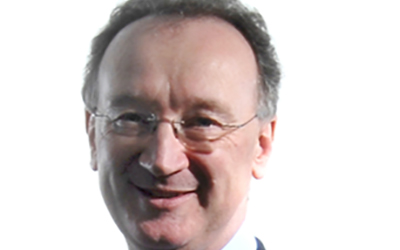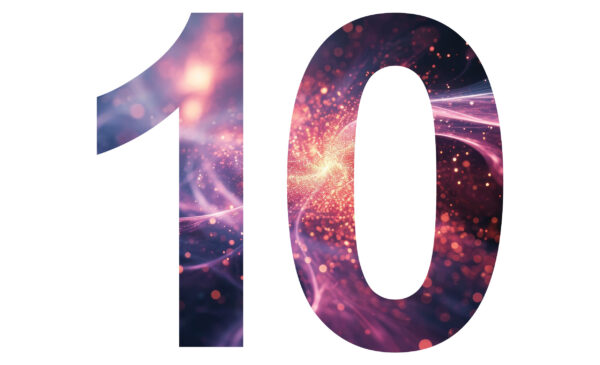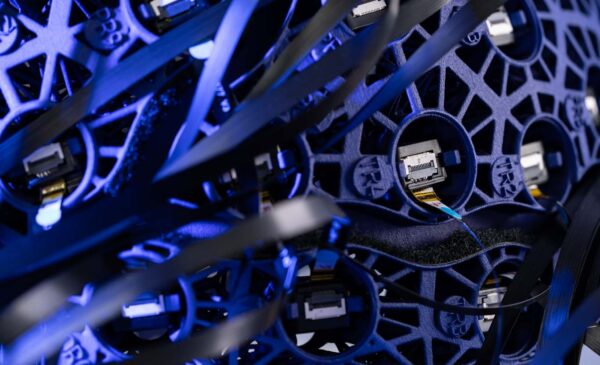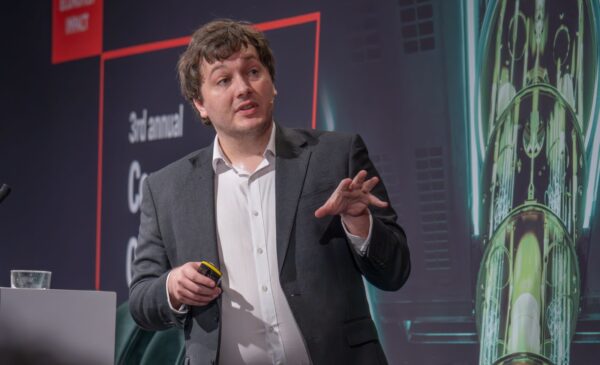Meet Dr Simon Bennett, Director of the UK Quantum Technology Hub Sensors and Timing
Sensors are unsung heroes that exist in many of the things we use every day from phones, to cars, and even domestic appliances such as the timer in our microwaves.
But, according to Dr Simon Bennett, Director of the UK Quantum Technology Hub Sensors and Timing led by the University of Birmingham, sensors are so invisible that we have become over-reliant on them, unconsciously risking a significant proportion of our national critical infrastructure on third-party sensor systems.
According the Blackett report, seven per cent of UK GDP is dependent on the availability of satellite signals and the cost per day of denial is measured in billions. According to Simon, that is far too much dependence on a system which is often considered to be vulnerable and easily compromised due to the weak satellite signals.
“Society can often sleep walk into situations which are problematic – we all love the convenience of having sat nav in our cars, but the fact is that too much of our society, our economy, is dependent on the availability of those weak signals.”
At the UK Quantum Technology Hub Sensors and Timing, academics are working closely with industry to build sensors for the real world. Simon adds: “The beauty of quantum sensing is that it enables us to measure things or see things that we couldn’t otherwise detect at all.”
He is certain that exploiting cold atoms’ science to develop sensor technologies will create considerable impact in developing a ‘robust critical national infrastructure’.
The sensors being created at the Hub, which partners with the Universities of Strathclyde, Glasgow, Nottingham, Southampton, Imperial, Sussex, NPL and the British Geological Survey, will cover a diverse range of applications: healthcare, precision navigation, geophysics and radar. How do these work packages link together?
Simon explains: “In all of these applications, the capability is limited by things we can’t see, or can’t easily measure. With geophysics, it’s desperately important to understand what is beneath the ground before holes are dug, because the risk, and the potential cost overrun, lies below the ground, and not above.”
Industrial collaboration is at the heart of the Quantum Technology Hub, and in its second phase which commenced in December 2019 after a five-year first phase, there are over 50 industry partners with projects worth over £100 million.
The Hub also aims to build engagement throughout the supply chain, from basic components all the way to the end user, which is usually where the primary economic benefit lies. Geophysics is a good example of this. Professor Nicole Metje is Head of the Power and Infrastructure Research Group at the University of Birmingham, and work package lead for Geophysics. She and her colleagues work closely with industry partners RSK and Teledyne e2v, as well as end user companies Network Rail and HS2, to build a gravity gradiometer to help better understand what lies beneath the ground.
In the Hub, Simon operates alongside Principle Investigator Professor Kai Bongs. The distinctive roles are representative of the careful balance between commercial drive and scientific exploration. Professor Bongs provides the scientific vision that is behind what the Hub is trying to achieve.
Simon adds: “Kai is really passionate about exploitation: finding economic and societal benefit is written throughout everything he does.’
“He cares deeply about making this stuff matter, more widely than just producing scientific publications in the pursuit of knowledge. My job is to make sure our colleagues remain focussed on the Hub objectives and our key deliverables to ensure that these benefits are realised.”
Simon’s involvement in the Quantum Technology landscape began a very long time ago. While working for the Technologies Strategy Board, which later became Innovate UK, he was approached about a new initiative called the UK National Quantum Technologies Programme, which was eventually launched in 2014 with £270 million in funding including an investment of £120 million in four Hubs across the country.
“The presumption was that this is early stage technology that was far too far from market for us (Innovate UK) to get involved, because we had to focus on activity that would engage industry support,” he said “This is great science, but would industry be interested?
“I think I was instrumental in persuading them that industry would indeed be interested, and I joined them as Deputy Strategy Director to help promote the quantum activity.”
With a background in engineering, but particularly in instrument product development, Simon understands the need to take technology through to economic and societal exploitation, and also of the demand to bridge University research and industry.
“My background and skill set is complementary to Kai’s in that I’ve sat on the other side of the fence most of my working life, but I do have a deep affinity and enthusiasm with the technology behind this stuff. There are challenges in developing novel quantum technologies,” added Simon.
“The potential of sensors is wide-ranging and profound, you can measure almost anything. But that is also a problem because many unwanted factors can influence the instrument,” he said. “Our gravity gradiometer is certainly sensitive to gravity, but also to magnetic fields.
“Dr Michael Holynski and his team are making the gradiometer function practically in a real environment, subject to many unwanted disturbances, not just in a lab. The impact of quantum sensors will be hugely significant”, adds Simon.
“We are looking at big issues such as seeing into the brain where a better understanding of brain function could have huge impact on the mental health of both children and the aging population, through to apparently much more mundane things like helping trains show up on time. Seeing below the ground will help make sure trains are not disrupted by flooding of the rail bed because of a failed drainage system.
“If we can make just a handful of these applications work we will have done a great job and helped to make a significant impact on the economy.”
And what is Simon hoping to achieve for the second phase of the Hub?
“Exploration was the focus of the first phase – of all the possible applications we could dream up for the primary sensor modalities,” he said. “Phase two focuses much more firmly on a small set of end-user applications which address the big economic opportunities we have identified – civil engineering, transport, healthcare, and much more.”




